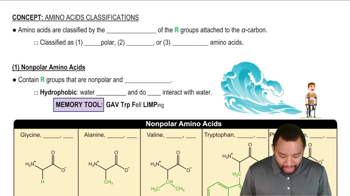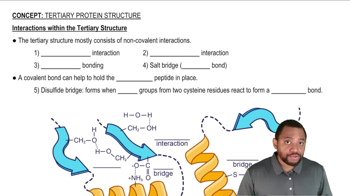Write the name for the amino acid represented by each of the following abbreviations:
d. Cys
 Verified step by step guidance
Verified step by step guidance Verified video answer for a similar problem:
Verified video answer for a similar problem:



 :41m
:41mMaster Amino Acid Three Letter Codes Concept 1 with a bite sized video explanation from Jules
Start learning